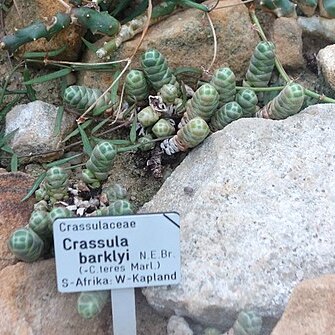Perennial or biennial, 20-90 mm tall, branching around base. Leaves tightly over-lapping, sessile, broadly ovate and saucer-like, 3-4 x 10-15 mm, with membranous, densely ciliate margins. Flowers in a dense, terminal, rounded head, embedded among leaves, flask-shaped, petals 9-11 mm long, fused in lower 2-3 mm, cream.
Like C. columnaris but much branched at base and leaf margins broadly membranous, with a dense fringe of cilia.

